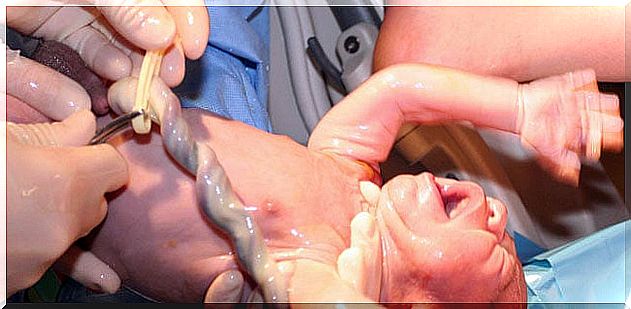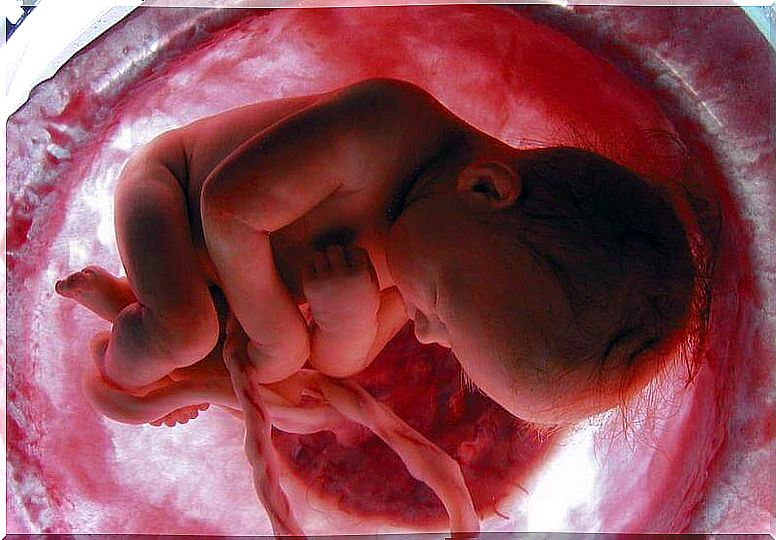What Are The Risks Of Umbilical Cord Prolapse?

Most pregnancies go to term without complications. However, during the long gestation process there are many risks. One of the drawbacks that the fetus can suffer in utero is compression or prolapse of the umbilical cord.
In general terms, it can be said that a large part of the problems that occur in pregnancy can be solved if we keep track of the process. Prenatal visits are very important during all stages of pregnancy.
The doctor is very concerned about ruling out a possible prolapse of the cord, which can happen in pregnancy or during childbirth. However, these types of complications are more frequent during childbirth, most of these are mild and without consequences. It is estimated that at least one in ten deliveries may have umbilical cord compression.
What Causes Umbilical Cord Prolapse?
Although it is more common in childbirth, umbilical cord prolapse can also occur in the last weeks of pregnancy. The stronger the baby’s movement, the more likely the cord is to be compressed. In some cases a temporary and actually harmless compression may occur. It is also possible for it to go on for long periods without being dangerous.
The umbilical cord goes through the compression and stretching process many times during its growth. This movement or that of the baby does not always end with compression of the cord, but it can occur. During childbirth, it is more common for stretching and compression to culminate in prolapse of the umbilical cord.

It is rare that the activity of the baby in the womb can cause the cord to be compressed. Instead, premature rupture of membranes tends to be one of the main causes. This sometimes occurs near labor, but when it occurs before week 32, the compression rate can rise to 76% of cases.
The umbilical cord is also usually compressed when it descends into the birth canal before the baby. That is why it is more common for such compression to occur more frequently at this time of pregnancy.
What are the risks of umbilical cord prolapse?
The umbilical cord is part of the vital system of the baby in the womb. This organ is in charge of carrying nutrients and oxygen to the fetus from the placenta. Therefore, when there is compression for a long period, a decrease in blood flow can occur and also a lack of oxygen. Other risks are as follows:
- Alteration of the fetal heart rate, especially related to variable deceleration. This means that the baby’s heart rate drops below 115 bpm for a period longer than 10 minutes. This slowdown is normal if it lasts a few minutes, but not more than 10.
- Changes in the baby’s blood pressure
- Presence and accumulation of carbon dioxide in the blood, which can lead to a process of respiratory acidosis
- Risk of brain damage depending on how long the lack of oxygen lasts
- Other health complications caused by possible episodes of fetal hypoxia while compression is taking place
- Fetal death
Damage to the health of the fetus due to umbilical cord prolapse depends on how long this process lasts. Most of the risk corresponds to the lack of oxygen, which can even lead to the death of the little one. These possible complications are rare, as doctors are able to control the situation.
Diagnosis and treatment

To diagnose a possible compression of the cord before delivery, the doctor may perform at least a couple of tests. It can be determined by means of a fetal doppler or ultrasound. Without these tests it is impossible to identify possible signs that compression is taking place.
Once the situation is detected, the main treatment consists of applying an amnioinfusion, which is the introduction of saline solution into the uterus. This solution should be at room temperature, to relieve pressure on the cord. This procedure is only applicable when the prolapse has occurred during childbirth.
When it comes to minor compression, at another time in pregnancy, an attempt is made to increase the amount of oxygen. That is, oxygen is placed on the mother in order to increase blood flow in the cord. If the case is more serious, the situation requires close monitoring of the baby’s vital signs.
If it is determined that the baby is showing signs of distress or has a slow heart rate, more drastic measures may be necessary. Depending on the stage of the pregnancy, a cesarean section may be done to save the life of the baby.










